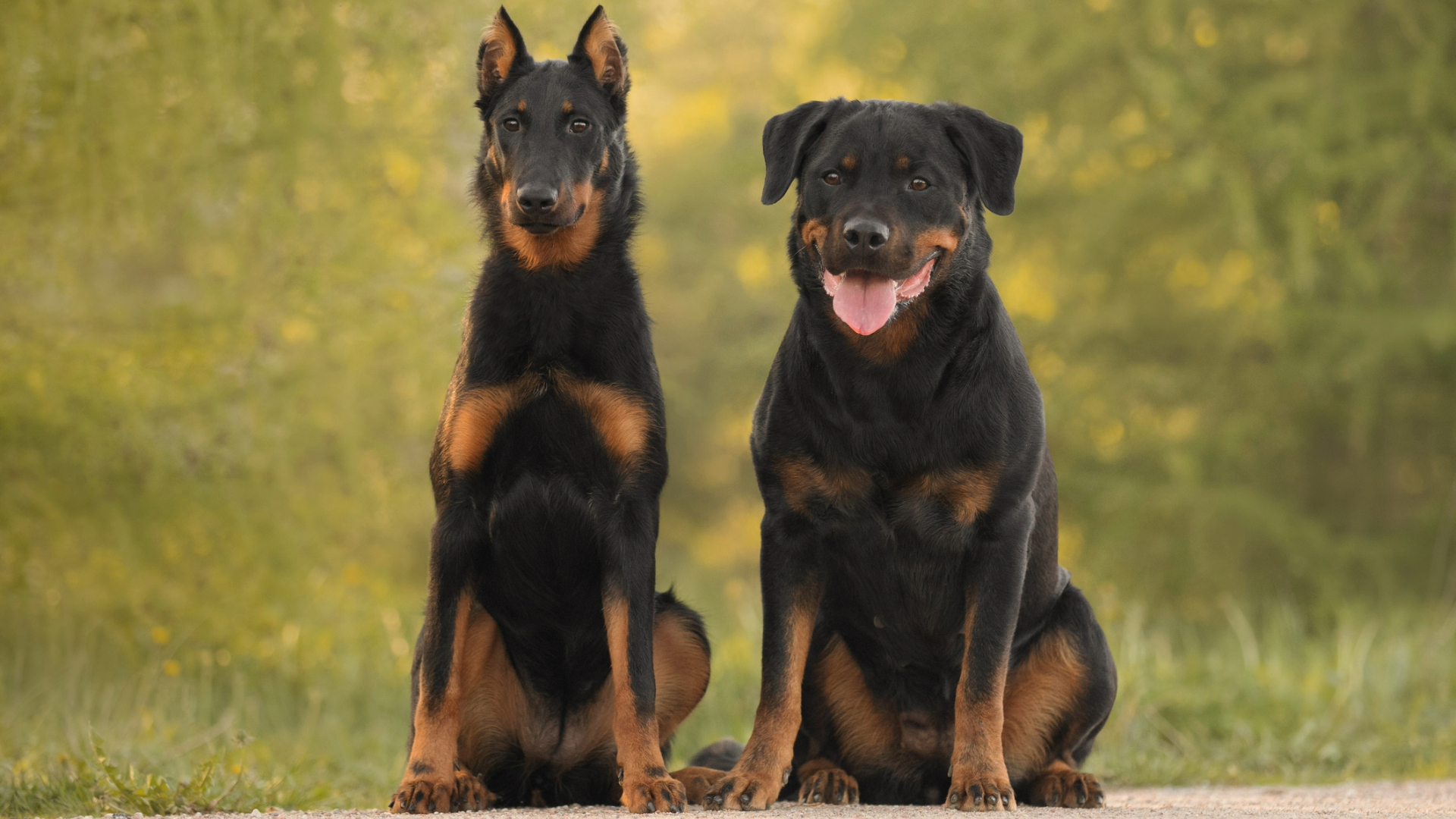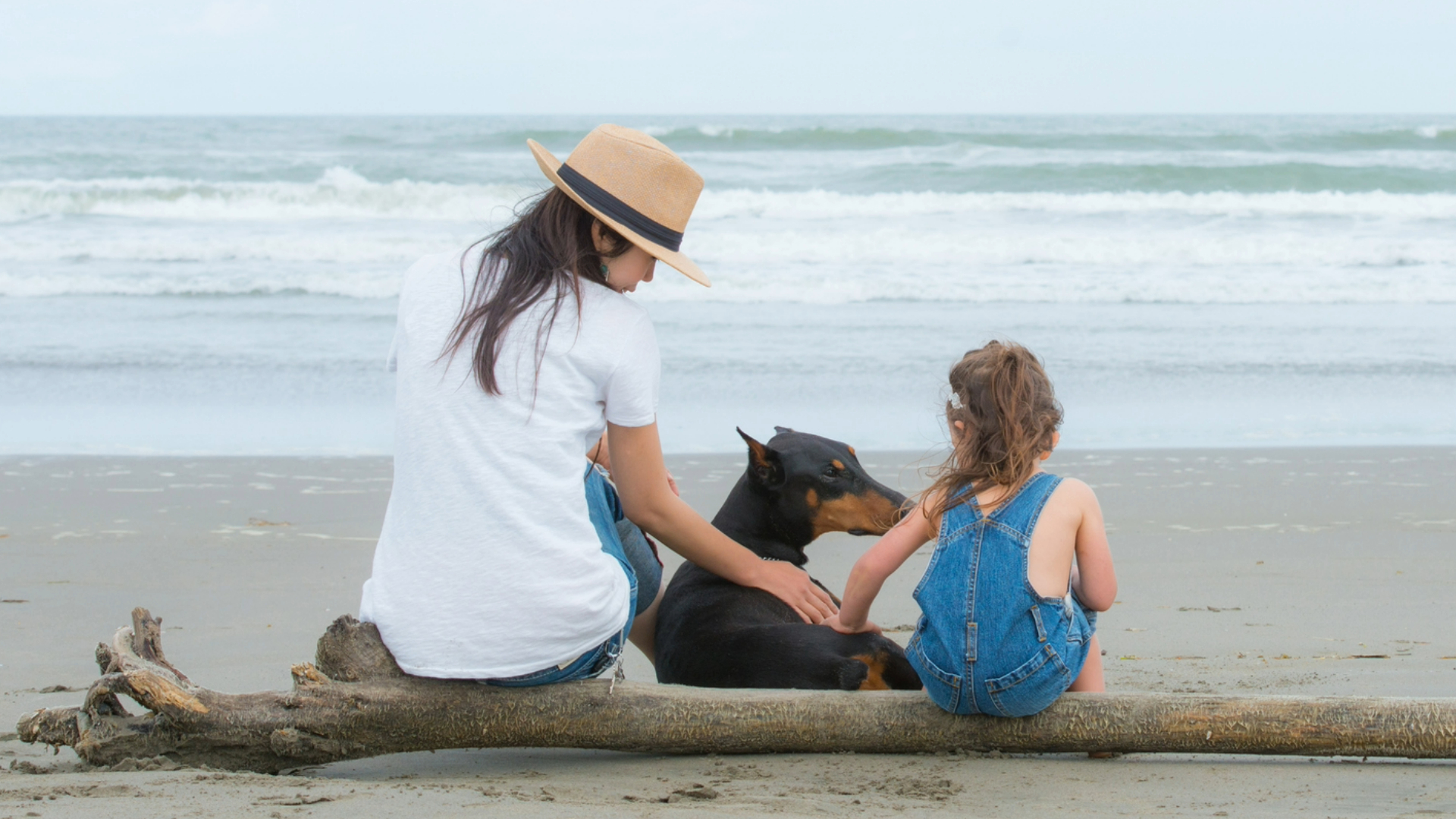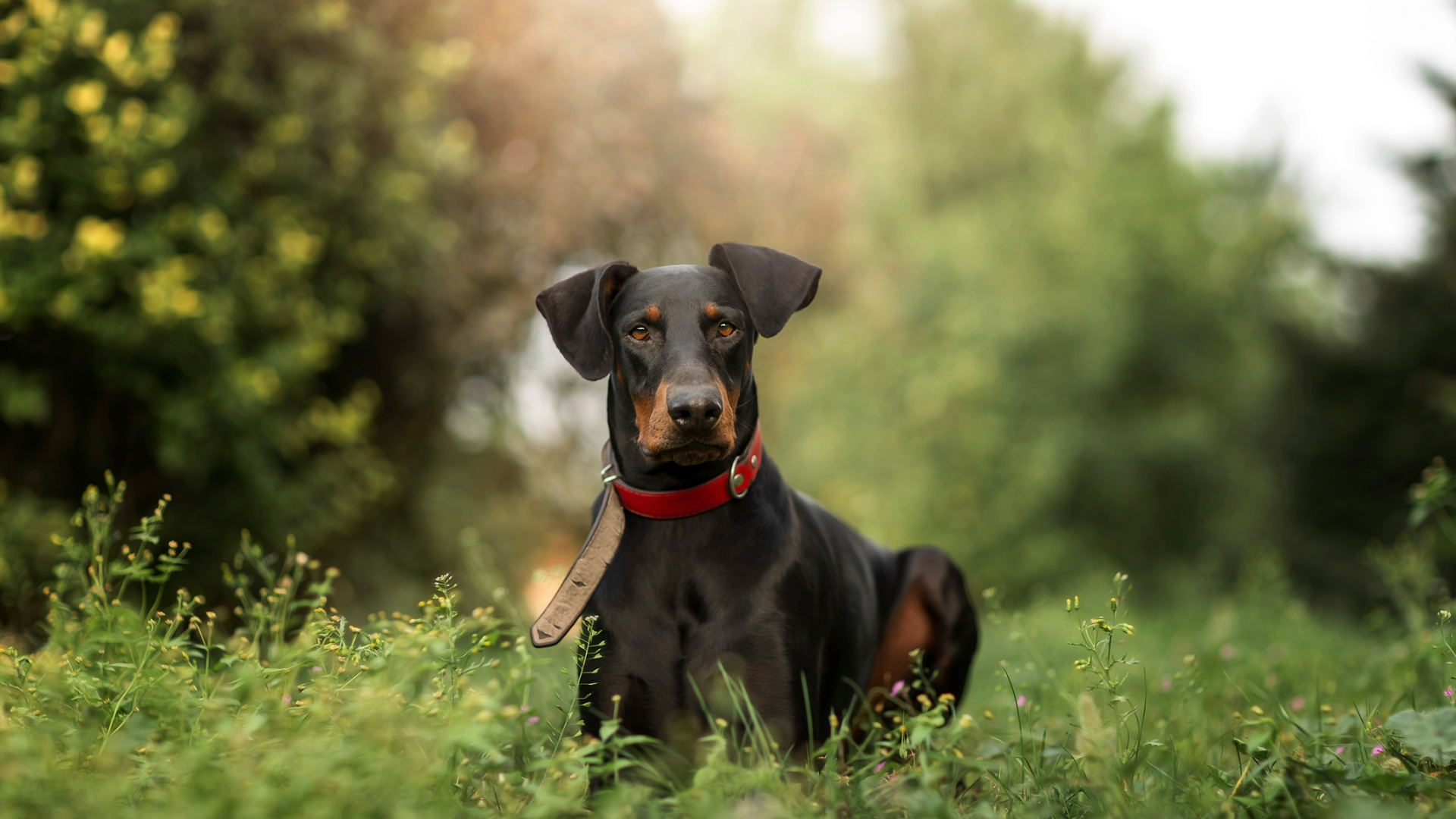Doberman vs rottweiler: Do dobermans get along with rottweilers?
We reveal the key differences between a doberman vs rottweiler (plus, whether they can be friends).

Doberman vs rottweiler - you might be questioning which breed is right for you. Or perhaps you’re considering getting both but are unsure if they’ll get along.
Sleek, narrow, and muscular, the doberman is highly energetic and needs plenty of stimulation from the best puppy toys or best dog toys. Thanks to their never ending loyalty, these canines make the perfect companions for active individuals or families. They also have top skills when it comes to obedience training and agility.
The rottweiler is powerful and protective, making them brilliant guard dogs to watch over your home. In fact, they’re one of the 20 best guard dog breeds. These stocky, short-haired pups are known for their loyalty, devotion, and confidence.
Want to learn more about the differences between these breeds? You’ve come to the right place. Below, we’ve compared their size, origin, characteristics, exercise needs, training requirements, and temperaments. We’ve also unpacked whether they’re good around children and if these two breeds can be friends…
Do dobermans get along with rottweilers?
Caroline Spencer, dog behaviorist at ProDog Raw, says: “A dog’s breed does not determine how it will react to others, it’s their personality and experiences that shape these social interactions. Some dogs are social butterflies and others prefer to stay close to their owners and/or dogs they’re familiar with.
"Like us, dogs are individuals, and you should never judge a book by its cover; we’re not all party animals, our characters and personalities are very much on a spectrum and the same can be said for dogs. Be led by their unique needs, not breed-based assumptions.”

Doberman vs rottweiler: Origins
Dobermans, more correctly known as doberman pinschers, are a relatively modern breed dating back to the end of the 19th century. Dog catcher and pound manager Karl Friedrich Louis Dobermann first bred the dogs in Apolda, Germany in 1890.
Get the best advice, tips and top tech for your beloved Pets
If you think they look a little like rottweilers, that’s because dobermann crossed several breeds including German pinschers, weimaraners and rotties to create his new dogs. They were first registered with the American Kennel Club in 1908.
The rottweiler, on the other paw, can trace their origins back to Roman times and are believed to be one of the oldest breeds. Descended from working mastiffs, they’re heavy set, powerful dogs originally used to protect cattle on long journeys.
Doberman vs rottweiler: Size
If you’re considering a doberman vs a rottweiler, you’ve hopefully already made the decision that you want a large dog! Male dobermans stand around 24 to 28 inches at the shoulder, while male rottweilers average around 24 to 27.
The females of both breeds tend to be a little smaller. The rottie can look much bigger than the doberman, though. Dobermans, while fast and muscular, aren’t as heavy set as rottweilers and should have well-defined, slender waists. Rotties are chunks of pure muscle with a leg at each corner and have large, broad heads and flatter muzzles.

Doberman vs rottweiler: Temperament
Although both breeds are powerful and impressive, both also have a hidden (or not so hidden) playful side. Dobermans are full of energy, so if you don’t have an active lifestyle they’re not a good fit for you. They’re trainable and easy to please but can be overly protective at times.
Rotties are lower energy models, but they’ll still need plenty of stimulation. The American Kennel Club categorizes dobermans as ‘fearless, loyal and alert’ against the Rottweiler’s ‘loyal, loving and confident guardian’, so while the two breeds have some traits in common there are some important differences.
Are dobermans good family dogs?
Before you make the decision to add a new member to the family, it’s important to think about how he’ll fit into the existing unit. Dobermans are energetic, powerful dogs who need lots of exercise.
If properly trained and socialized, they’re also great with kids. They’re very loyal and can be over-protective of their ‘pack’, so proper training is essential – for both your dobie and your kids!

Are rottweilers good family dogs?
Rottweilers sometimes get a bad rap. They’re intelligent, loyal and have had the guarding instinct bred into them for thousands of years. Weighing in at an average 120lb, you don’t want to get on the wrong side of them! Rotties are primarily working dogs, and they need a job to do.
The American Rottweiler Club states the breed is ‘not a dog for everyone. They require a calm, stable and firm pack leader or they will assume that role for you’. With the correct training and stimulation, though, rottweilers can make wonderful companions and they have a surprisingly playful streak.
A well-socialized, educated rottie is a great gentle goofball with children and in the hands of an experienced owner will quickly become an integral member of the family.
Doberman vs rottweiler
Dobermans have a lot of energy and can start to exhibit behavioral problems if they don’t get enough exercise. If you don’t want to come home to a trashed house every night, your dobie will need one to two hours exercise a day. For young, healthy dogs, this should including lots of high impact exercise such as running, swimming and ball chasing. If you love trail running, a dobie might be your perfect partner.
Rottweilers, on the other hand, are a little more chilled and don’t require such high energy exercise. They’re still lively dogs though and need to be kept fit and interested with at least 45 minutes to two hours of daily activity, depending on age.
Rotties are intelligent and will love playing games where they need to think as well as run. If you have an enclosed yard, try playing hide-and-go-seek, treasure hunt (for biscuits) or set up an obstacle course.
Are Dobermans smarter than Rottweilers?
Turns out there’s a scientific answer to this one! Stanley Coren, a professor of canine psychology at the University of British Columbia, wrote The Intelligence of Dogs in 1994. He based his evaluations on research done by obedience trial judges from the American Kennel Club and Canadian Kennel Club, and ranked the breeds in order according to results.
Based on Coren’s list of 130 breeds, dobermans come in at number five while rotties are in ninth place. While both breeds are in the top 10, according to Coren and his research dobermans have the edge. The downside of owning a canine Einstein is that both breeds will need to be kept stimulated and engaged to keep them happy.

Doberman vs rottweiler: which is more trainable?
As they’re both intelligent breeds, both the dobie and the rottie respond well to training and are quick learners. Experienced owners will know how to set firm boundaries, as both dobermans and rottweilers can be guilty of trying to outsmart an unsuspecting handler!
While dobermans tend to be eager to please, rotties have a stubborn streak a mile wide which can cause them to be more challenging to train. Both breeds will benefit from clear rules and lots of interaction with their owners.
This durable dog toy is perfect for large dogs and comes with a lifetime guarantee. It can bounce, float in water, and is great to chew on. Plus, it’s made from recyclable materials.

Megan is a Staff Writer at PetsRadar, covering features, reviews, deals, and buying guides. She has a wealth of experience caring for animals, having grown up with dogs, cats, horses, guinea pigs, and more throughout her life. She studied BA Journalism at the University of Westminster, where she specialized in lifestyle journalism and was editor of Smoke Radio’s lifestyle website. Megan works alongside qualified vets and accredited trainers to ensure you get the best advice possible. She is passionate about finding accurate and helpful answers to your pet-related questions.

